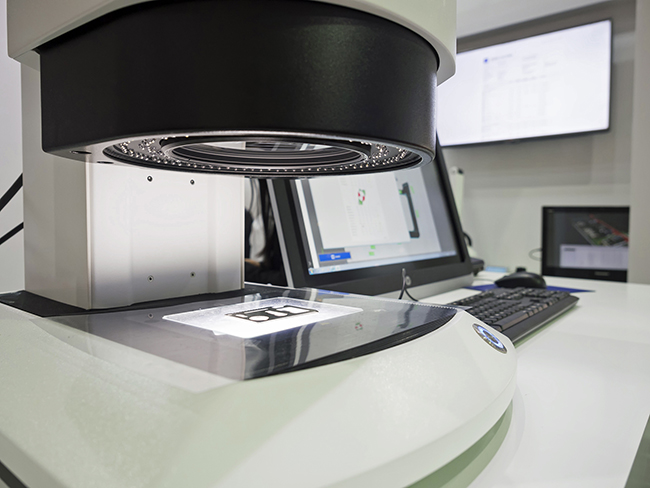TOOLING FIXTURES
WELDING SYSTEMS
SYSTEM INTEGRATION
Vision inspection systems are often called machine vision systems. They provide an image-based inspection automated for a wide range of industrial and manufacturing applications. 2D and 3D machine vision inspection systems are typically used for automation inspection, quality control, sorting, and robot guidance.
Automated inspection machines can be programmed in for a wide range of parts, accuracy and rates. These systems include data collection, image capture, image storage, and total parts counts. Vision inspection machines can not only inspect products, they can process and sort them.
Vision inspection systems are equipped with a single or multiple cameras. Some use video and lighting. Vision inspection systems can measure parts, verify parts are in the proper positions, and recognize the shapes of parts. They can conduct high speed measuring and sorting of parts, based on a variety or parameters such as texture, geometry or contrast. . Computer guided software processes images and assesses the captured data. A pass-fail capacity can trigger an operator to act.

Improved productivity – Automated product quality inspection can lessen the need for manual quality control, allowing personnel to take on other tasks.
Consistent quality control – Manual inspection errors are eliminated. Quality control remains at a constant high standard.
Improved brand reputation – Businesses can suffer losses due to product defects and subsequent recalls. Consistent automated vision inspection reduces or eliminates inconsistencies or defects, and increased costs related to them.
Continuous monitoring – Vision inspection systems can spot issues and stop production, or discard unacceptable parts. They can diagnose and rectify situation in less time, boosting uptime.
Robotic arms equipped with vision inspection systems offer higher precision. A robot can e programmed to choose which part to pick out of a bin of assorted parts. Normally, these parts would need to be aligned and oriented in an orderly fashion, which cuts into production time. TDue to the vision system’s capabilities, time no longer needs to be spent on arranging the parts for the robot to select.
Vision inspection systems allow robotic arms to be more flexible. A robot equipped with a vision system can identify where on the workpiece it needs to operate, rather than needing specific placement. In turn, the robot becomes more adaptable and allows the assembly process to continue without being slowed down by imprecise placements.

The food and pharmaceutical industries use Vision Inspection Systems used to inspect finished products for completeness. They can examine the precision and integrity of caps, rings, and safety seals to ensure that each component meets specifications and fits properly. The capabilities of these systems allows for more industries to use them.
Vision Inspections systems have the capability to: